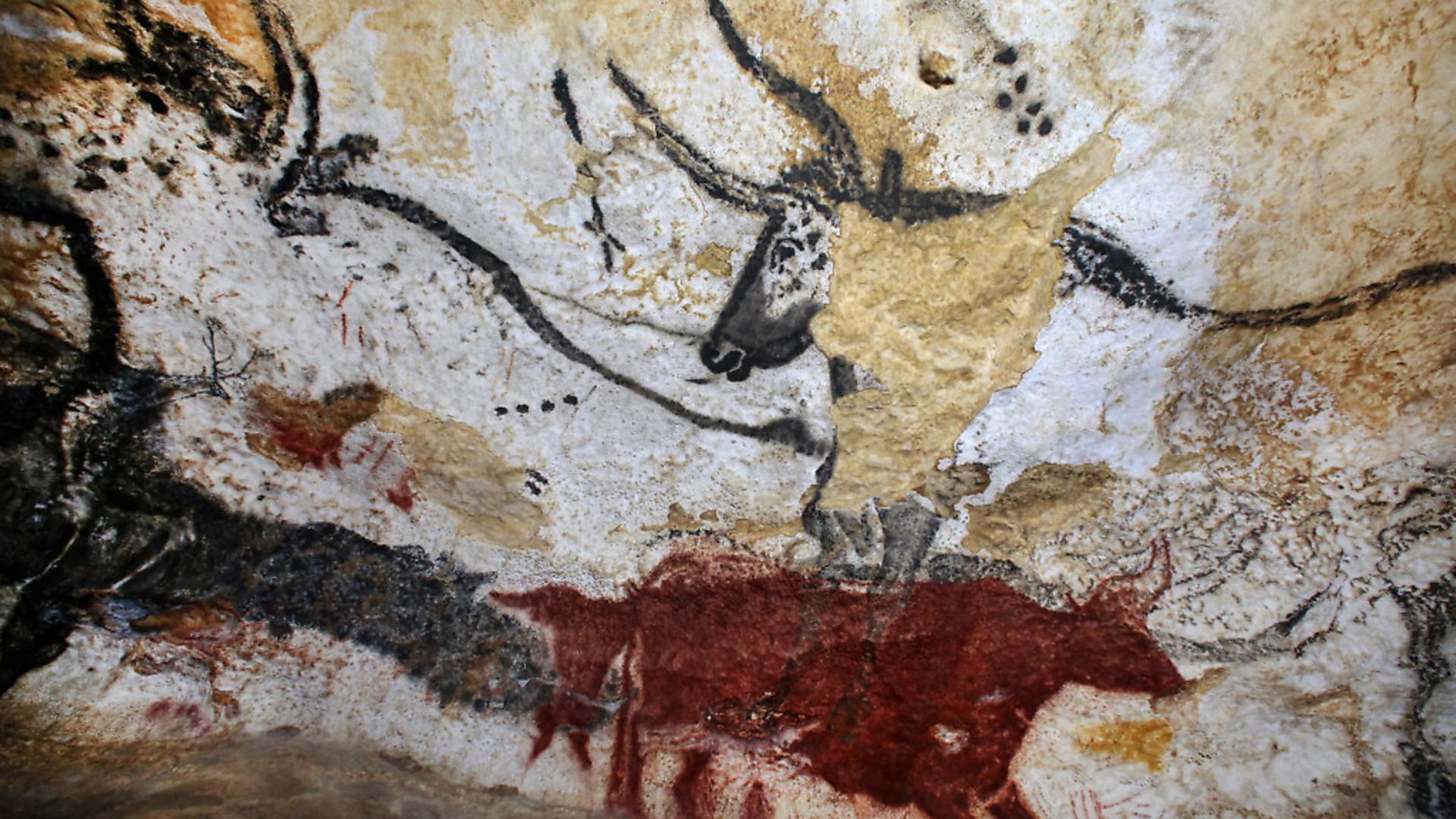
By 17,000 years ago, with Neanderthals having long since died out, Homo sapiens had triumphed as the only surviving species of the human family tree, and their dominion over the Earth was truly beginning. But their manipulation of the world around them began not with farming, which came some 5,000 years later, but with art.
The huge charging bulls at Lascaux, dating to this period, are a universal symbol of the creative impulses of our earliest ancestors, but as they also worked in stone, ivory, bone, clay and antler, they crafted three-dimensional objects which opened up new possibilities – musical instruments.
That early people were going beyond mere singing and clapping to engage in the universal human activity of music-making prompts us to question how our common cultural roots bind us together today.
The history of music in fact began even before the time of Lascaux, dating to near the beginning of the Upper Paleolithic age. When a cave bear femur was found at Divje Babe archaeological park in north-western Slovenia in 1995 which appeared to have the spaced holes of a rudimentary flute, it was not the first such find, but it was the most sensational.
Finds made at the beginning of the 20th century had been attributed to early Homo sapiens, but the Divje Babe flute was dated between 58,000 and 48,000 BC – since Homo sapiens only reached Europe around 40,000 years ago, the flute had to be the work of Neanderthals. This would not only fundamentally change our view of Neanderthal society, but mean the Divje Babe flute is, by thousands of years, the world’s oldest-known musical instrument.
Yet, the Divje Babe find has been controversial, some arguing that it is simply a chewed-up bone, and that the holes were made by a hyena’s incisors. More definite candidates for the oldest-known musical instruments are the swan bone and mammoth ivory flutes discovered in the Geißenklösterle cave, 40 miles south of Stuttgart, which were carbon dated to between 42,000 and 43,000 years old in 2012.
This usurped the three flutes found in 2008 and dated to 35,000 years ago from the Hohle Fels cave, in the same valley as Geißenklösterle, including a 20cm long vulture’s bone flute with four holes and a V-shaped mouthpiece.
The flute is incredibly well-preserved and it needs little imagination to visualise a stereotypical caveman holding it to his lips by a roaring hearth after a hard day on the hunt.
Finds of more recent provenance include the 20 bird bone flutes found at Isturitz in the French Pyrenees, dating to 30,000 to 10,000 years ago, and a set of mammoth bones decorated with red ochre found in Mezin, Ukraine, dated to 20,000 BC which, it has been speculated, may have been a kind of prehistoric drum kit.
Meanwhile, cave art at Trois-frères, south-western France, dating to 13,000 BC, includes an etching of a figure playing a nose flute, and later cave art in north-eastern Spain appears to show flutes being used by figures hunting deer. Even if only a handful of instruments fashioned by early man have been found, the evidence is clear that we were music-making at the very dawn of humanity as we know it.
While the Hohle Fels flute may not be the oldest, it perhaps holds the most significance for our understanding of the place of music in prehistoric European culture. It was found near the Venus of Hohle Fels – a tiny, 6cm tall fertility figure carved in mammoth ivory, and the oldest artwork depicting the human form yet discovered – and thus indicates a whole lost world of Paleolithic religious culture. Our ancestors played music not just for recreation or hunting, but as part of a whole magical world which put a veneer of comfort over the brutality of their lives.
This strange world of prehistoric sights and sounds has been brought to life by the project Songs of the Caves, which brought together academics from Britain and Spain to investigate the archaeo-acoustics of five painted caves in northern Spain. In doing so, the project began to give some idea of what Prehistoric music may have actually sounded like. Using reconstructions of the Hohle Fels flute and a vulture bone flute from Isturitz, as well as cow horns, drums, a bullroarer (a flat piece of antler, swung by a cord to create a humming sound), and the human voice, they powerfully evoked the soundscapes that Paleolithic man may have created, recapturing an ephemeral artform that is easily lost and forgotten in the face of vivid and iconic cave art.
Rupert Till, professor of music at the University of Huddersfield, led the Songs of the Caves project. He got a step closer to the reality of sound for early man when he recorded the replica Isturitz flute being played in the very cave it was found in. The recordings were used on Till’s Dub Archaeology – an attempt at ‘sonic time travel’, he says – taking Leftfield’s Leftism and Pink Floyd’s Dark Side Of The Moon as key influences.
Reverie situated those recordings in ‘a wash of electronic sounds’, while the single Isturitz used a recording of the flute made in another cave over a chill-out track, giving it a world music feel. Egyptian musician Mina Salama, performer on Isturitz, is a player of the ney – a long, open-ended flute from the Middle East of 5,000 years provenance – and was instantly able to play the tens of thousands of years old flute, suggesting the universal nature of basic music technology. In melding the very ancient and the very modern, Till has created music that forces us to think about the common characteristics that make us human.
Till was also instrumental in the production of a series of CDs released by the European Music Archaeology Project (EMAP), an international project supported by the Culture Programme of the European Commission, which sought to trace the sounds of Prehistory through to traditions which still survive today. Volume Four, titled The Edge Of Time, featured reconstructions of flutes from Geißenklösterle, Hohle Fels, and Isturitz being played by flautist Anna Friederike Potengowski, with accompaniment from percussionist Georg Wieland Wagner, to explore ‘the eternal musical truth of breath on bone’. The results are often mournful, and incredibly haunting.
David Attenborough’s recently-released two-CD set My Field Recordings from Across the Planet includes bone flutes being played by indigenous peoples in South America only half a century ago. In this we see – or rather hear – a collapse of time, the gap between us and Paleolithic people narrowing dramatically.
Ultimately, whether used for leisure, work or worship, music was a means of social cohesion for early man, and the EMAP project put the emphasis on finding ‘sound-evidence’ of Europe’s ancient common roots where ‘musical instruments played a key role in creating a network of interconnections, cross-references and shared features among the various European cultures’.
Music binds us to our neighbours and, as such, it is a means of survival. But above all, prehistoric instruments movingly remind us that whether over tens of thousands of years ago or today, music is so often how we keep the darkness at bay.









